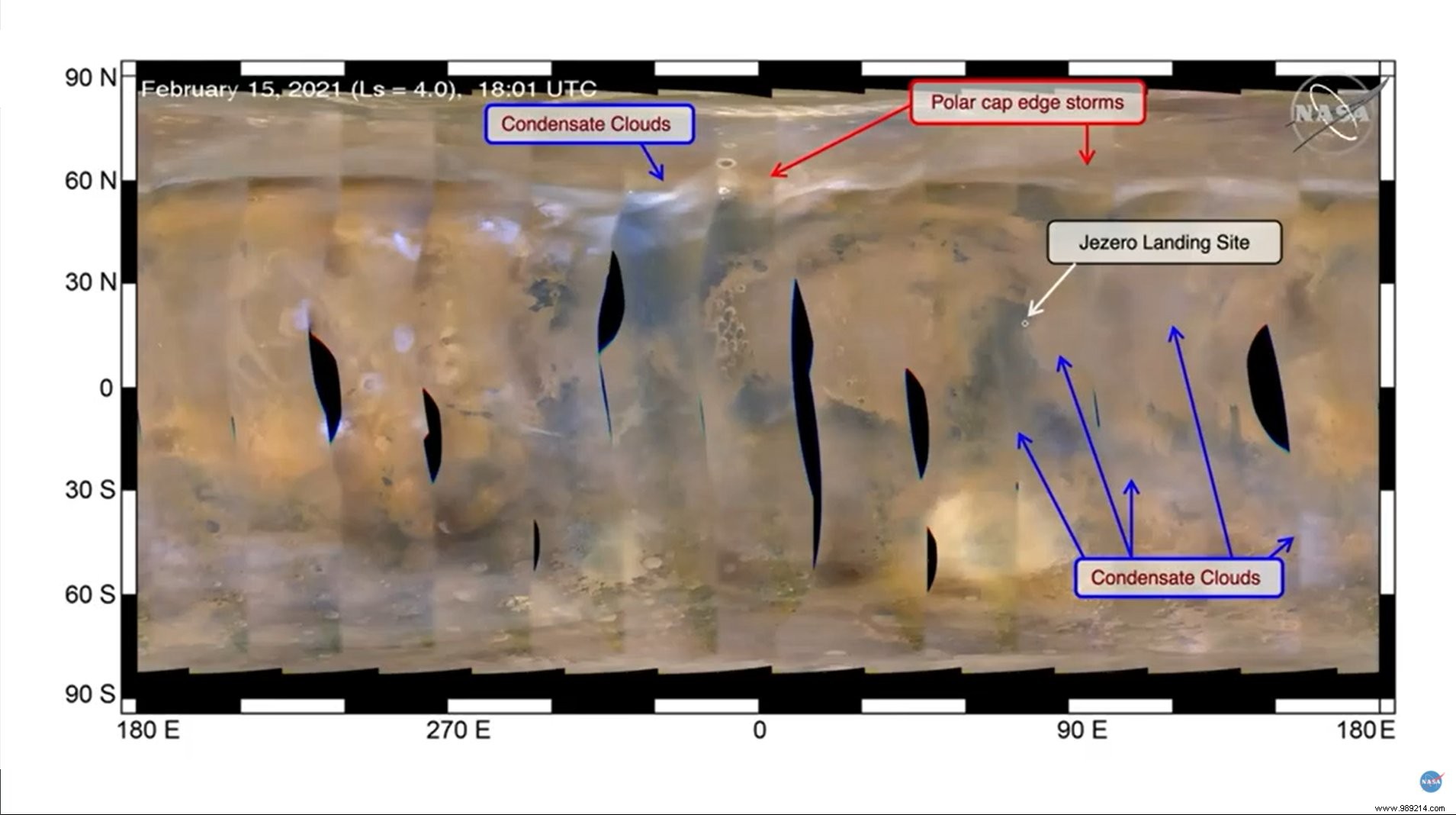Nor the clouds, if not the Martian dust storms will disrupt the landing attempt of the Perseverance rover this evening. This is great news, as NASA cannot delay the event.
After a seven-month long journey, the American rover Perseverance is preparing for the seven most dangerous minutes of its mission . The serious things will begin around 9:48 p.m. (French time) when the capsule will begin to pierce the atmosphere of Mars at nearly 20,000 km / h, before the opening of its enormous parachute which will slow the fall.
The descent stage will then detach as it approaches the surface, and then, about twenty meters above the ground, the rover will descend after three cables that will come loose once the wheels of the rover hit the ground. At this precise moment, it should be around 9:55 p.m. in France .
Here are two French-speaking links to follow the event live:- CNES YouTube channel - Astro Alex Youtube channel - the space and aero channelFortunately, according to those in charge of the mission, the weather should not interfere with all these maneuvers. "The weather conditions are looking pretty good to us at the moment “, says Allen Chen, who leads the team at NASA’s Jet Propulsion Laboratory in California. “There will be clouds and some storms at the edge of the polar cap, but nothing near our landing site (Jezero crater) “.
This Jezero crater, believed to have harbored water between three and four billion years ago, is indeed located at around 18 degrees in the northern hemisphere of the red planet, entering its spring season on February 7th.
So this is great news for NASA, which can no longer delay the rover's landing. Note that the mission team had targeted this very precise landing time even before the spacecraft took off from Earth on July 30.

Of course, despite the cooperative time, Perseverance will have to still face an extremely complicated descent. “Even with clear skies, landing is the most critical and dangerous part of the mission “, indeed recalls Allen Chen. "We just can't guarantee its success ". For your information, only 40% of missions have landed successfully since the 1960s .
Also remember that several probes in orbit around the planet will also be requisitioned so as not to miss anything from this landing. If successful, it will be the fifth NASA rover to land on Mars, following Sojourner (1997), sister rovers Spirit and Opportunity (2004) and Curiosity (2012).